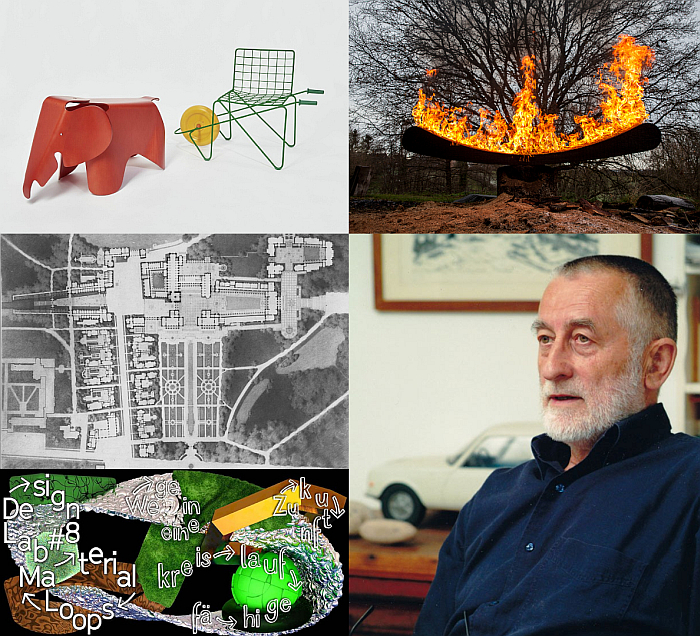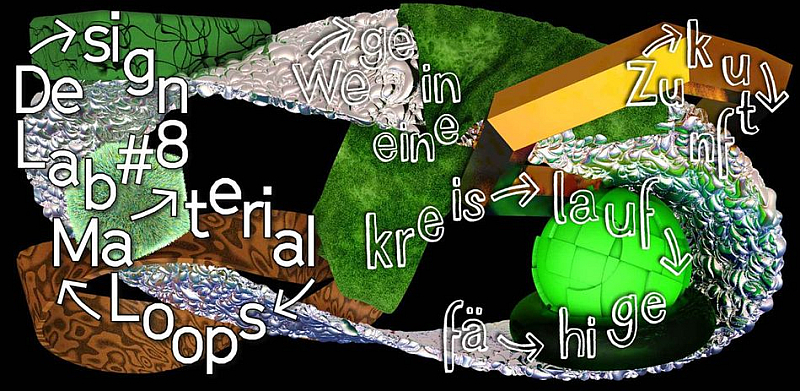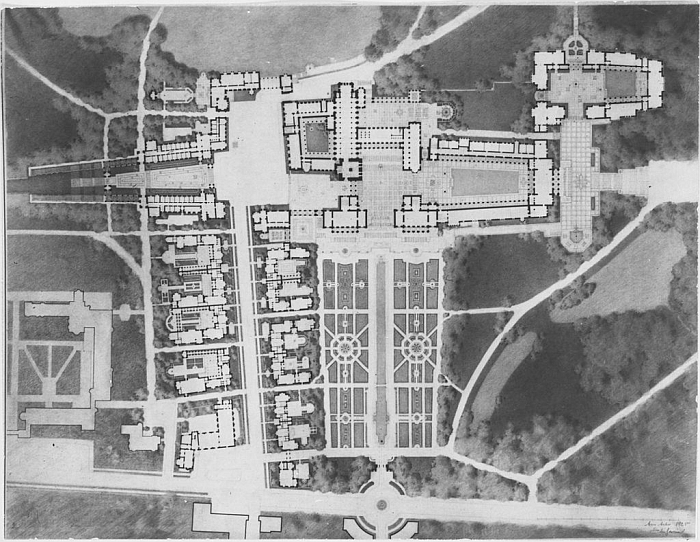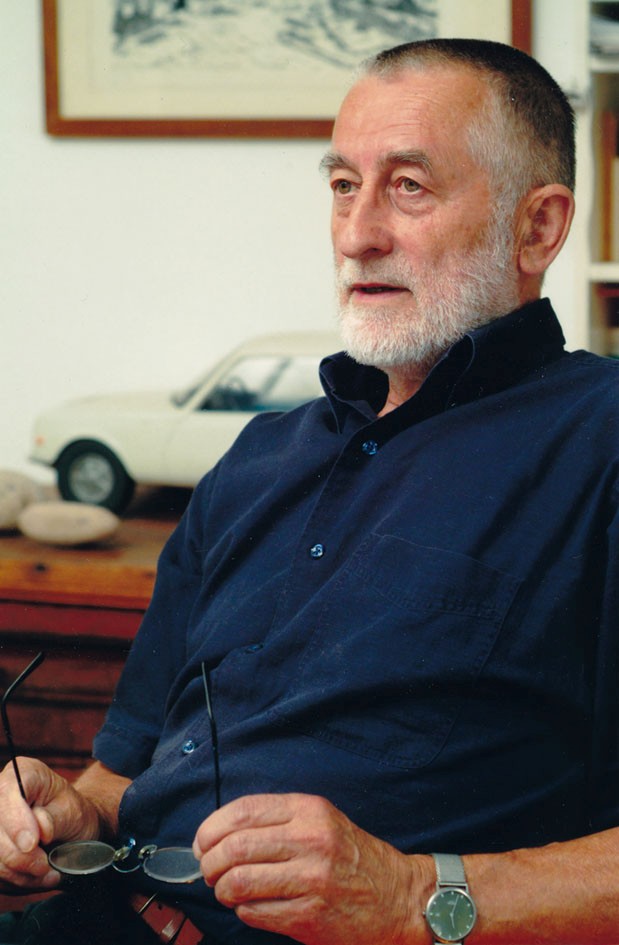5 New Architecture & Design Exhibitions for June 2021
“I wonder what it would be like to live in a world where it is always June”, ponders Anne Shirley in Lucy Maud Montgomery’s 1915 novel Anne of the Island.
“You’d get tired of it”, sighs her adoptive mother Marilla Cuthbert by way of reply.
“I daresay”, responds Anne, “but just now I feel that it would take me a long time to get tired of it…”
Thoughts we very much concur with as we survey and contemplate the varied profusion of new architecture and design exhibitions sprouting forth in June 2021. Who could ever tire of such a joyous abundance? Who?
Our five recommendations from that early summer crop can be found in Leipzig, Hornu, Berlin, Bloomfield Hills and Chemnitz…….
“Chairs. For children only!” at the Grassi Museum für Angewandte Kunst, Leipzig, Germany
The intimate links between furniture and human societies allow furniture to act as a very reliable recorder of the development of those societies. Something that can be particularly well demonstrated, certainly in a European context, in seating for children: until the middle of the 19th century such didn’t really exist, neither did children in European society. But then as the 19th century gave way to the 20th and it set out on its course towards the 21st, not only did children increasingly become recognised and accepted as part of society, but the specific needs and demands of children began (when at first only slowly and begrudgingly) to become increasingly recognised and accepted. And provided for. Including in seating.
A development and evolution the Grassi Museum für Angewandte Kunst, Leipzig, aim to discuss and explore in Chairs. For children only! through a presentation of some 120 children’s chairs, predominately from the collection of Gisela Neuwald, augmented by works from their own collection, and which promise to take the viewer on a journey from mid-19th century Thonet children’s chairs as some of the earliest chairs deliberately designed at a child’s scale, to contemporary children’s chair designs, chairs not only designed at a child’s scale but as a considered response to the realities, demands and requirements of a contemporary child. A journey not only through formal and functional developments as understandings, and acceptance, of children as more than just small adults developed, but also through material developments, and which should thereby help underscore the importance of new materials for the realisation of contemporary formal and functional expressions.
And thus a journey which, should, help allow not only for better understandings of the development of seating for children, but also, via the conduit of the child’s chair, allow for better understandings of the development of the place, role and relevance of children in and to European society since the 19th century. And of the intimate links between furniture and human societies.
Chairs. For children only! is scheduled to open at the Grassi Museum für Angewandte Kunst, Johannisplatz 5–11, 04103 Leipzig on Thursday June 10th and run until Sunday October 3rd. Please check the Grassi Museum für Angewandte Kunst website for current information regarding opening times, ticketing and safety/hygiene regulations.
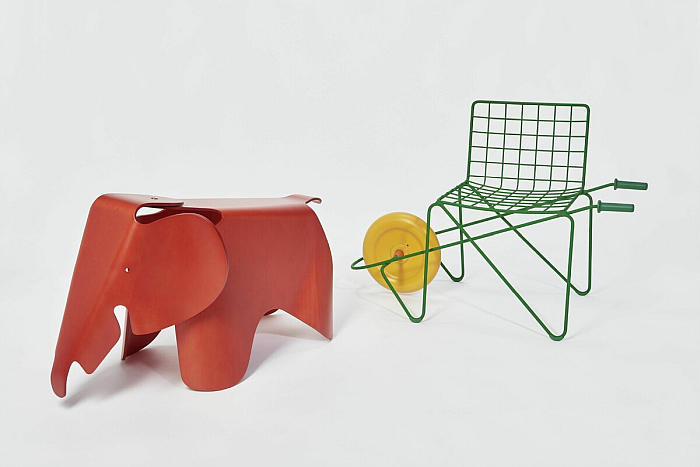
Eames Elephant by Charles & Ray Eames through Vitra (l) and Trotter by Rogier Martens for Magis (r), part of Chairs. For children only!, Grassi Museum für Angewandte Kunst, Leipzig, Germany (Photo Esther Hoyer/ GRASSI Museum für Angewandte Kunst)
“Kaspar Hamacher. Mother Earth” at CID – centre d’innovation et de design au Grand-Hornu, Hornu, Belgium
Although Kaspar Hamacher wouldn’t, doesn’t, describe himself as a designer, he, for example, refers to his studio as an Atelier for Handcrafted Monolithic Woodworks, sees himself more in a craft tradition and is always keen to underscore his focus on the physical object rather than any conceptual conceit in his work; his approach to the development of objects, and his understandings of those objects, objects that are invariably primarily functional and responsive rather than decorative and passive, are, without question, of the types that could be considered design.
Promising a presentation in three parts: a selection of objects from Hamacher’s portfolio which aims to allow insights into and understandings of his processes and positions; a large installation which, according to CID Grand-Hornu will “fill the Magasin aux Foins with the emotions that we feel in the great outdoors when we are at one with the forest”; and a series of works-in-progress in the more limited, yet still expansive, outdoors of the Grand-Hornu garden which should allow for deeper appreciations of Hamacher’s processes and positions, Mother Earth should not only allow for a wide and varied introduction to Kaspar Hamacher, his approaches, understandings and the works that thereby arise, but also allow for reflections on the interface between craft and design, on our relationships to both the objects with which we surround ourselves and to the environments in which we find ourselves, of what is important, relevant, in those relationships. And thereby reflections on whether Kaspar Hamacher is or isn’t a designer. And if that question is important, is relevant.
Kaspar Hamacher. Mother Earth is scheduled to open at CID – centre d’innovation et de design au Grand-Hornu, Site du Grand-Hornu, Rue Sainte-Louise 82, 7301 Hornu on Sunday June 27th and run until Sunday September 26th. Please check the CID – centre d’innovation et de design au Grand-Hornu website for current information regarding opening times, ticketing and safety/hygiene regulations.

Kaspar Hamacher at work…..(Photo © Jo Magrean, courtesy CID – centre d’innovation et de design au Grand-Hornu)
“Design Lab #8 Material Loops – Paths to a Circular Future” at the Kunstgewerbemuseum, Berlin, Germany
An increasing number, when arguably not yet a majority, of us have accepted that the future of life of earth involves moving away from linear material consumption, that in all areas of our contemporary, industrial, consumption we simply have to, have to, embrace, develop and optimise circular material economies.
With Material Loops, the eighth edition of their Design Lab, Berlin’s Kunstgewerbemuseum promise a presentation of projects ranging from existing commercial processes to speculative student proposals which aim to explore and elucidate aspects of material circularity and which as such should serve as the basis for stimulating a widened debate on what is possible, what could be possible, what must be made possible in context of material circularity.
In addition Material Loops will also discuss the attempts by the Italian city of Prato to become a Circular City, attempts which highlight that the future of life of earth involves us all, individually and collectively; and also tends to the understanding that in addition to embracing, developing and adopting circular material economies, there is also a very urgent necessity to embrace, develop and optimise circular financial economies and circular social economies. Sustainability isn’t just environmental.
Design Lab #8 Material Loops – Paths to a Circular Future is scheduled to open at the Kunstgewerbemuseum, Matthäikirchplatz, 10785 Berlin on Friday June 11th and run until Sunday August 28th. Please check the Kunstgewerbemuseum Berlin website for current information regarding opening times, ticketing and safety/hygiene regulations.
“With Eyes Opened: Cranbrook Academy of Art Since 1932” at Cranbrook Art Museum, Bloomfield Hills, Michigan, USA
The 1930s saw several academic institutions open in America where craft, fine art, applied art and architecture were encouraged to co-exist and enter into dialogues, including Cranbrook Academy of Art. Nestling in the near rural calm of Bloomfield Hills, Michigan, today a northern suburb of the Detroit metropolitan region, Cranbrook Academy enjoys, not unjustifiably, the reputation as one of the cradles of American mid-century design; a reputation closely associated with the likes of Charles Eames, Ray Kaiser, Eero Saarinen, Florence Schust, Harry Bertoia, Don Albinson and innumerable others with links of varying types to the institute in its earliest years.
Cranbrook Academy of Art isn’t however just American mid-century Modernism, nor even just design, and certainly not only its earliest years.
Promising a presentation in nine chapters, nine galleries as the Cranbrook Art Museum, somewhat logically, phrase it, including Paper Trail with its reflections on printmaking at Cranbrook, The Sculpture Court, and thus that, as the museum note, “founding discipline at Cranbrook” or Architecture of the Interior & Cranbrook and the Chair which bring us back to Cranbrook and contemporary design, With Eyes Opened should provide for a fulsome review of the institute and it neigh-on 90 year (hi)story which should help underscore that whatever its reputation may be, Cranbrook Academy of Art is, and always was, the sum of all the staff and students who have contributed to that neigh-on 90 year (hi)story, and by extrapolation that Cranbrook Academy of Art is its contribution to the development of arts, crafts and design in America, and further afield, since the 1930s. And into the coming decades.
With Eyes Opened: Cranbrook Academy of Art Since 1932 is scheduled to open at Cranbrook Art Museum, 39221 Woodward Ave, Bloomfield Hills, MI 48304 on Friday June 18th and run until Sunday September 19th. Please check the Cranbrook Art Museum website for current information regarding opening times, ticketing and safety/hygiene regulations.
“simson, diamant, erika. Formgestaltung von Karl Clauss Dietel” at the Kunstsammlungen, Chemnitz, Germany
Anyone unfamiliar with the cultural artefacts of East Germany will be unfamiliar with the Simson, Diamant and Erika of the title of the Kunstsammlungen Chemnitz’s forthcoming exhibition.
Anyone familiar with the cultural artefacts of East Germany will be very familiar with the motor bikes, bicycles and typewriters of the title of the Kunstsammlungen Chemnitz’s forthcoming exhibition.
All may be unaware of the depth and scope of the contribution of the Karl Clauss Dietel of the title of the Kunstsammlungen Chemnitz’s forthcoming exhibition to the development of design; a contribution that goes beyond Simson motor bikes, Diamant bicycles and Erika typewriters. And beyond East Germany.
In 2019 the Kunstsammlungen Chemnitz acquired Dietel’s personal archive and since then have been methodically indexing and cataloguing the therein contained models, photographs, documents and products: the first public result of which is simson, diamant, erika, which promises to be a fulsome retrospective of a creative who trained as a machinist before studying at the Hochschule für bildende und angewandte Kunst in Berlin-Ost and subsequently began a professional career which encompasses graphic design, visual design, architecture, art as well as the product and industrial design for which he is, arguably, best known. And a career which in addition to the physical projects he developed also saw him contribute to the development of design theory, become an important protagonist of understandings of the links between object and user, between object and society, between form and function, of function as multi-faceted. And that in both the East Germany where he is (relatively) well known, and the Germany, and the wider world, where he is less well known.
simson, diamant, erika should not only allow us all to become better acquainted with Karl Clauss Dietel, to approach more probable and sustainable understandings of Karl Clauss Dietel, understandings of Karl Clauss Dietel as more than Simson, Diamant & Erika, as more than East Germany, but in doing so allow for more probable and sustainable understandings of the (hi)story and development of design in the contemporary Germany.
simson, diamant, erika. Formgestaltung von Karl Clauss Dietel is scheduled to open at the Kunstsammlungen Chemnitz, Theaterplatz 1, 09111 Chemnitz on Sunday June 27th and run until Sunday October 3rd. Please check the Kunstsammlungen Chemnitz website for current information regarding opening times, ticketing and safety/hygiene regulations.
Tagged with: Berlin, chairs, chemnitz, Cranbrook Academy of Art, Cranbrook Art Museum, Design Lab, Grand-Hornu, Grassi Museum für Angewandte Kunst, Hornu, Karl Clauss Dietel, Kaspar Hamacher, Kids chairs, Kunstgewerbemuseum Berlin, Kunstsammlungen Chemnitz, Leipzig, Mother Earth, simson diamant erika, With Eyes Opened
